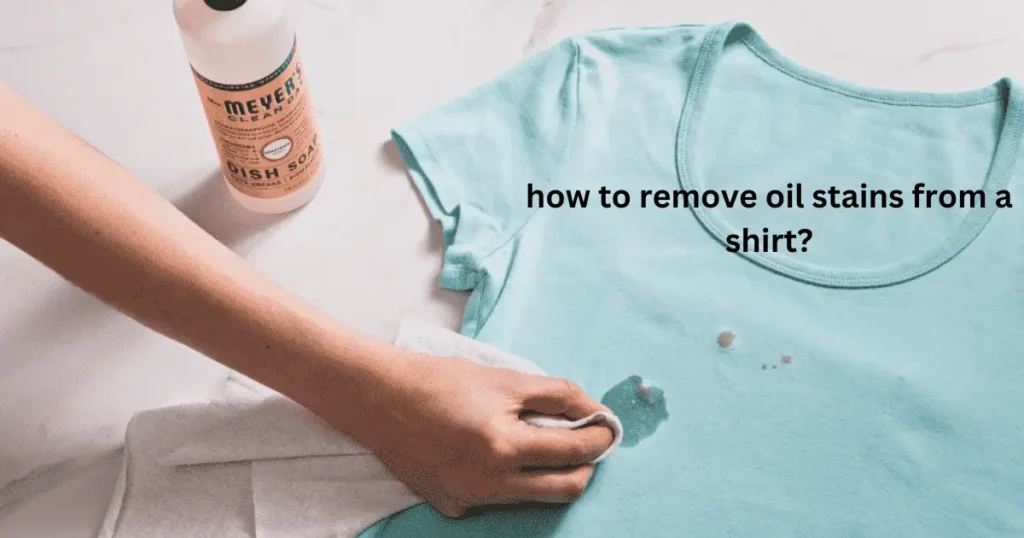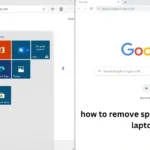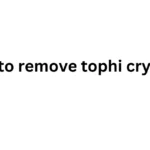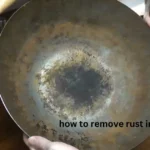Ugh, oil stains! We’ve all been there. You’re enjoying a delicious plate of pasta when splat – a rogue drop of olive oil leaps onto your shirt. Or maybe you’re working on your car and accidentally brush up against the greasy engine.
Whatever the cause, oil stains can be a real pain to get out of clothing. But don’t worry! This guide will show you how to remove oil stains from a shirt, no matter how stubborn they seem.
We’ll go over everything from simple home remedies to more advanced techniques, so you can choose the method that works best for you. With a little patience and the right approach, you can say goodbye to those pesky oil stains for good!
Understanding Oil Stains and Fabrics
Before we jump into stain removal, it’s important to understand a bit about oil stains and how they interact with different fabrics. Oil is a non-polar substance, meaning it doesn’t mix with water. That’s why simply rinsing an oil stain with water won’t do the trick. In fact, it can sometimes make the stain worse by spreading it around.
Different fabrics also react to oil stains in different ways. Natural fibers like cotton and linen tend to absorb oil quickly, making the stain harder to remove. Synthetic fabrics like polyester are less absorbent, but the stain can still set in if not treated promptly.
Types of Oil Stains
Not all oil stains are created equal. Here are a few common culprits:
- Cooking Oils: Olive oil, vegetable oil, canola oil, etc.
- Motor Oil: From cars, motorcycles, and other machinery.
- Grease: Often found in kitchens and garages.
- Butter and Margarine: Dairy-based fats.
- Salad Dressings: Often contain a mix of oil and other ingredients.
Knowing the type of oil stain you’re dealing with can help you choose the most effective removal method.
How to Remove Oil Stains: Home Remedies
For fresh oil stains, you can often achieve great results with common household items. Here are some tried-and-true methods:
Dish Soap
Dish soap is designed to cut through grease, making it a great first line of defense against oil stains.
- What you’ll need: Dish soap, warm water
- How to:
- Apply a small amount of dish soap directly to the stain.
- Gently rub the soap into the fabric with your fingers.
- Let it sit for a few minutes.
- Rinse the fabric thoroughly with warm water.
- Launder the garment as usual.
Pro Tip: Use a clear dish soap to avoid any potential dye transfer.
Baking Soda
Baking soda is a natural absorbent that can help lift oil stains from fabric.
- What you’ll need: Baking soda, toothbrush
- How to:
- Sprinkle baking soda generously over the oil stain.
- Let it sit for at least 30 minutes, or even overnight for stubborn stains.
- Gently brush away the baking soda with a toothbrush.
- Launder the garment as usual.
Pro Tip: For a stronger effect, make a paste of baking soda and water before applying it to the stain.
Cornstarch
Similar to baking soda, cornstarch can absorb oil and help loosen the stain from the fabric fibers.
- What you’ll need: Cornstarch, soft cloth
- How to:
- Cover the oil stain with cornstarch.
- Gently rub the cornstarch into the stain with a soft cloth.
- Let it sit for 30-60 minutes.
- Brush off the cornstarch.
- Launder the garment as usual.
White Vinegar
White vinegar is a natural cleaner with mild acidic properties that can help break down oil molecules.
- What you’ll need: White vinegar, water, spray bottle
- How to:
- Mix equal parts white vinegar and water in a spray bottle.
- Spray the solution onto the oil stain.
- Let it sit for 15-20 minutes.
- Blot the area with a clean cloth.
- Launder the garment as usual.
Lemon Juice
Like vinegar, lemon juice has natural acidity that can help dissolve oil.
- What you’ll need: Lemon juice, cotton ball
- How to:
- Apply lemon juice to the stain using a cotton ball.
- Let it sit for 15-20 minutes.
- Rinse the fabric with water.
- Launder the garment as usual.
Pro Tip: Test lemon juice on an inconspicuous area of the fabric first, as it can sometimes cause bleaching.
How to Remove Oil Stains: Advanced Techniques
If home remedies don’t completely remove the oil stain, or if you’re dealing with an older, set-in stain, you may need to try a more powerful approach.
WD-40
WD-40 is a multi-use product that’s surprisingly effective at removing oil stains from fabric.
- What you’ll need: WD-40, paper towels, dish soap
- How to:
- Spray WD-40 on the stain, covering it completely.
- Let it sit for 15-20 minutes.
- Blot the area with paper towels to absorb the oil and WD-40.
- Apply dish soap to the stain and gently rub it in.
- Launder the garment as usual.
Caution: WD-40 can be flammable, so use it in a well-ventilated area and keep it away from heat sources.
Dry-Cleaning Solvent
Dry-cleaning solvent is a strong chemical solution designed to dissolve grease and oil.
- What you’ll need: Dry-cleaning solvent, cotton balls, well-ventilated area
- How to:
- Always work in a well-ventilated area when using dry-cleaning solvent.
- Apply a small amount of solvent to a cotton ball.
- Blot the stain from the outside in, working towards the center.
- Repeat with clean cotton balls until the stain is lifted.
- Launder the garment as usual.
Caution: Dry-cleaning solvent is a harsh chemical and can be harmful if inhaled or ingested. Always follow the instructions on the product label carefully.
Commercial Stain Removers
There are many commercial stain removers available specifically designed for oil and grease stains.
- What you’ll need: Commercial stain remover, follow product instructions
- How to:
- Choose a stain remover that is appropriate for the fabric type.
- Follow the instructions on the product label carefully.
- Launder the garment as usual.
How to Remove Oil Stains from Different Fabrics
Different fabrics require different approaches when it comes to stain removal. Here’s a quick guide:
| Fabric Type | Best Methods | Notes |
|---|---|---|
| Cotton | Dish soap, baking soda, cornstarch, vinegar, lemon juice | Durable and can withstand most treatments. |
| Linen | Dish soap, baking soda, cornstarch | Similar to cotton, but can be more delicate. |
| Polyester | Dish soap, commercial stain remover | Less absorbent, but stains can still set in. |
| Silk | Dry-cleaning solvent (test on an inconspicuous area first) | Very delicate, professional cleaning is often recommended. |
| Wool | Dry-cleaning solvent (test on an inconspicuous area first) | Can be easily damaged by harsh chemicals. |
| Denim | Dish soap, baking soda, WD-40 | Durable, but avoid excessive scrubbing. |
Tips to Prevent Oil Stains
Prevention is always better than cure! Here are some tips to help you avoid oil stains in the first place:
- Wear an apron: When cooking or working with oily substances.
- Be mindful when eating: Take smaller bites and use napkins to protect your clothing.
- Treat stains immediately: The sooner you address an oil stain, the easier it will be to remove.
- Avoid rubbing the stain: This can spread the oil and make it harder to remove.
- Wash stained garments separately: To prevent the oil from transferring to other clothes.
How to Remove Oil Stains: A Summary
Oil stains can be frustrating, but they’re not impossible to remove. By understanding the nature of oil stains and the fabric you’re working with, you can choose the most effective removal method.
Remember to always test any new method on an inconspicuous area of the fabric first, and follow product instructions carefully. With a little patience and effort, you can keep your clothes looking clean and fresh!
FAQs on Removing Oil Stains
How do you get old oil stains out of clothes?
Old oil stains can be more challenging, but not impossible. You may need to try a stronger method like WD-40 or a commercial stain remover. Soaking the garment in warm water with dish soap or laundry detergent for a few hours before washing can also help loosen the stain.
What dissolves oil from clothes?
Several substances can help dissolve oil from clothes, including dish soap, baking soda, vinegar, lemon juice, and commercial stain removers. For tougher stains, WD-40 or dry-cleaning solvent can be effective.
Does vinegar remove oil stains?
Yes, white vinegar can help remove oil stains due to its mild acidity. It works best on fresh stains. Mix equal parts white vinegar and water and apply it to the stain before laundering.
How do you remove oil stains from clothes after drying?
Removing oil stains after drying is more difficult because the heat sets the stain. However, you can still try the methods mentioned earlier, like dish soap, baking soda, or commercial stain removers. You may need to repeat the process a few times for best results.
Can baking soda remove oil stains from clothes?
Yes, baking soda can effectively absorb oil stains from clothes. Sprinkle baking soda on the stain and let it sit for at least 30 minutes before brushing it off and laundering the garment.






